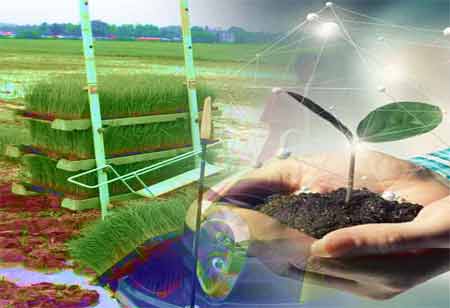Thank you for Subscribing to Agri Business Review Weekly Brief
Tackling Mycotoxin Contamination Via Effective Agronomic Practices
Adopting best management practices in planting, harvesting, and feeding reduces varied risk factors like mould growth and mycotoxin growth in crops and feeds.

By
Agri Business Review | Saturday, December 09, 2023
Stay ahead of the industry with exclusive feature stories on the top companies, expert insights and the latest news delivered straight to your inbox. Subscribe today.
Adopting critical agronomic practices opens up seamless advantages like influencing mycotoxin contamination in feeds.
FREMONT, CA: Adopting best management practices in planting, harvesting, and feeding reduces varied risk factors like mould growth and mycotoxin growth in crops and feeds. However, these transformations may often be tamed via several critical settings, like weather conditions and limitations framed for different production systems and locations when adopting effective agronomic procedures. Moulds producing mycotoxins and plants with the ability to cause infection over living organisms are highly capable of adapting and adjusting to the hindrances in the desired period.
Generally, factors like temperature, moisture content, oxygen levels, and physical damage happening in the crop hold an induced influence on mould growth and mycotoxin formation. Wherein, stress factors such as drought and excessive rainfall are critically increasing the susceptibility rate of plants to mould colonisation and mycotoxin formation. Increasingly complex processes in mycotoxin development often harm the prevention of contamination, where the components are produced in varied scenarios, like in the field, and the feed is placed in storage.
The risks associated with mycotoxin contamination are highly regarded and influenced by integrated factors produced in the crop production environment, but may often be intimidated by the capabilities that a mould infection could encompass in producing mycotoxins. That is, the complexities of dealing with living organisms are reducing the intensity of the prevention of fungal infection, which plays a crucial role in the agronomic domain.
Various researchers from time to time have enlisted the agronomic practices that hinder the ability to influence fungal infections and mycotoxin production in a variety of crops and the steps required to implement a plan for the critical reduction of plant susceptibility over moulds. Alongside this, effective practices in the sector are brought about on an efficient note per the plant growth space, ensuring the health of crops. Moreover, harvest practices and storage management contain an induced capability to influence the risk factors of contamination in feeds, considering the pre-planned factors.
For instance, measures like hybrid selection, crop rotation, tillage practices, seed treatment with fungicide, planting date, and density are taken into critical consideration. Additionally, post-planning factors like irrigation, weed and insect management, fungicide application in the field, weather conditions during the harvest, and the date of harvest are taken into account. Factors stressing plants, be they drought conditions, heavy rainfall, hail, insect, or wildlife damage, high crop intensity, or competition with weeds, often make plants highly susceptible to infection. Thus, ensuring that plants are met with critical agronomic decisions favouring increased production and yielding is crucial.





